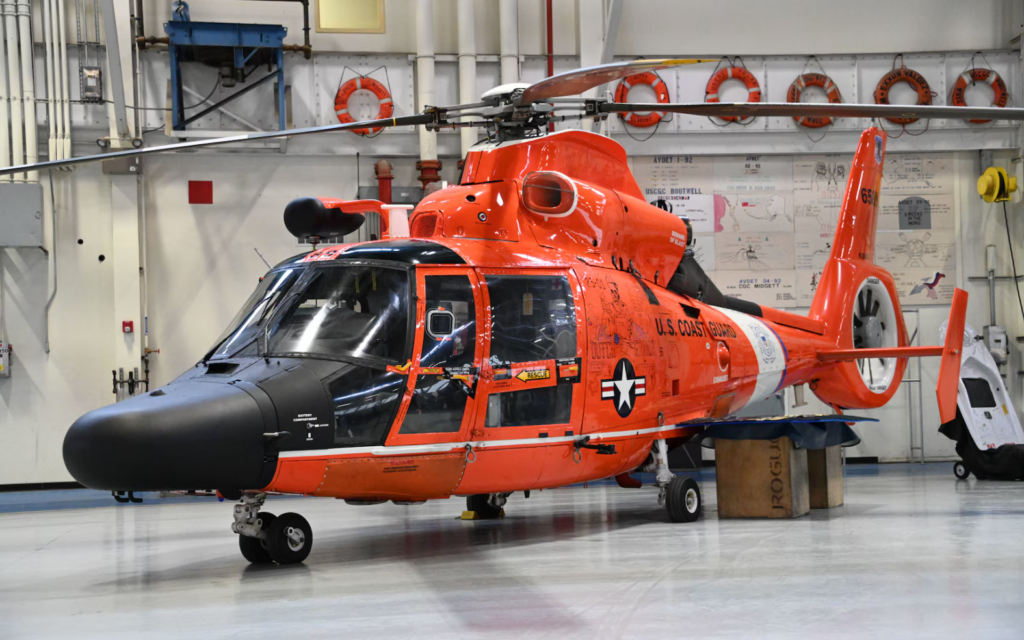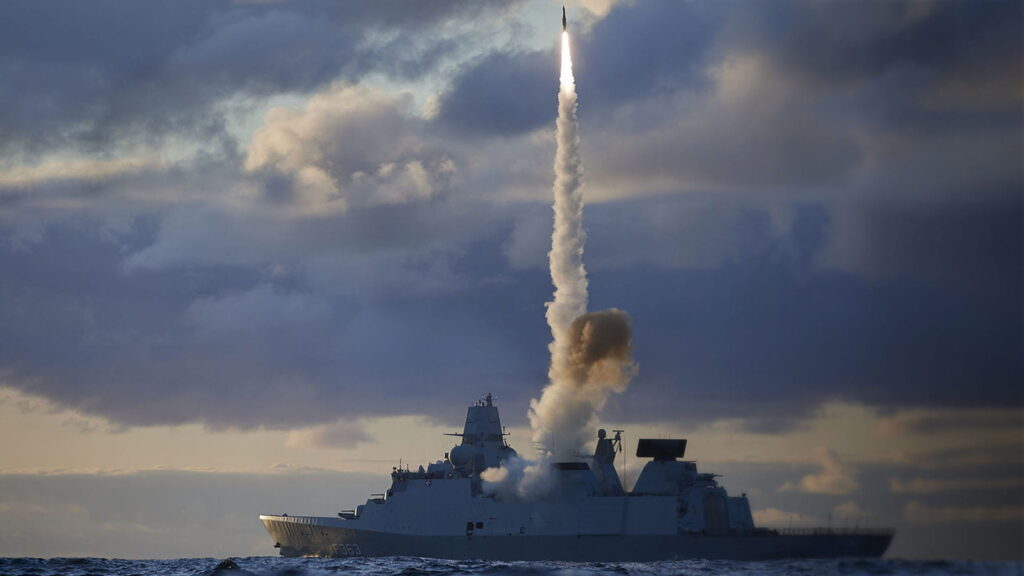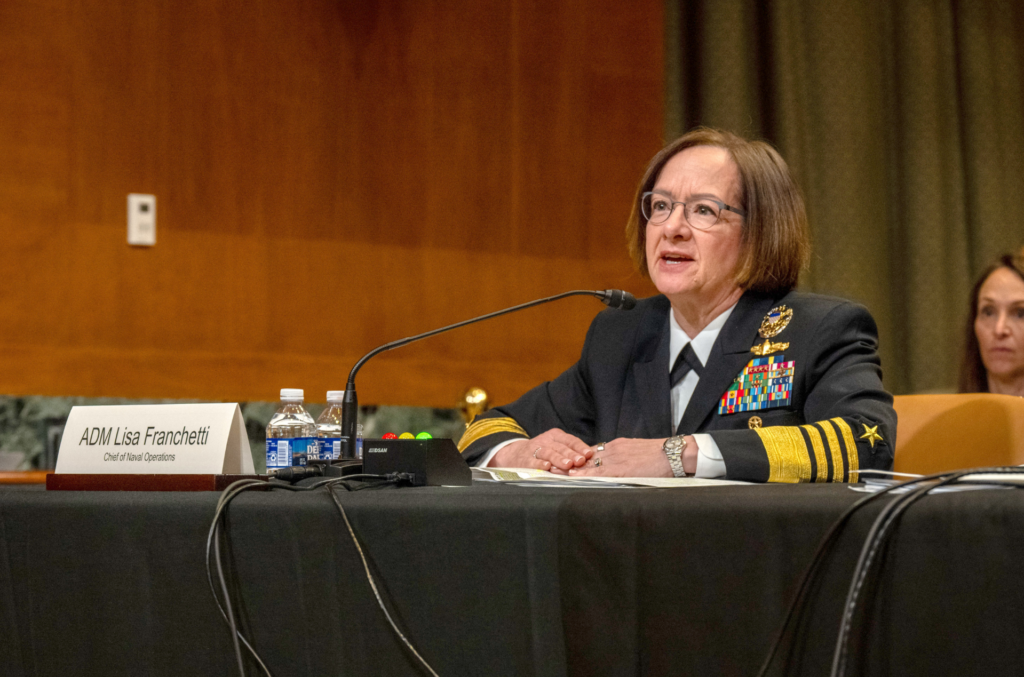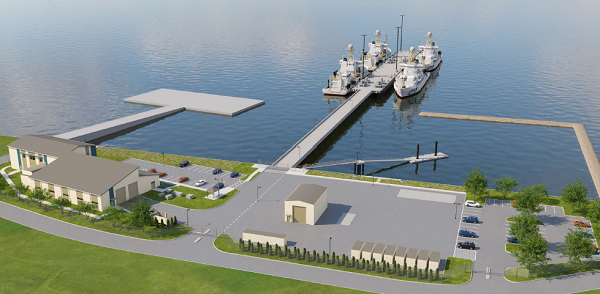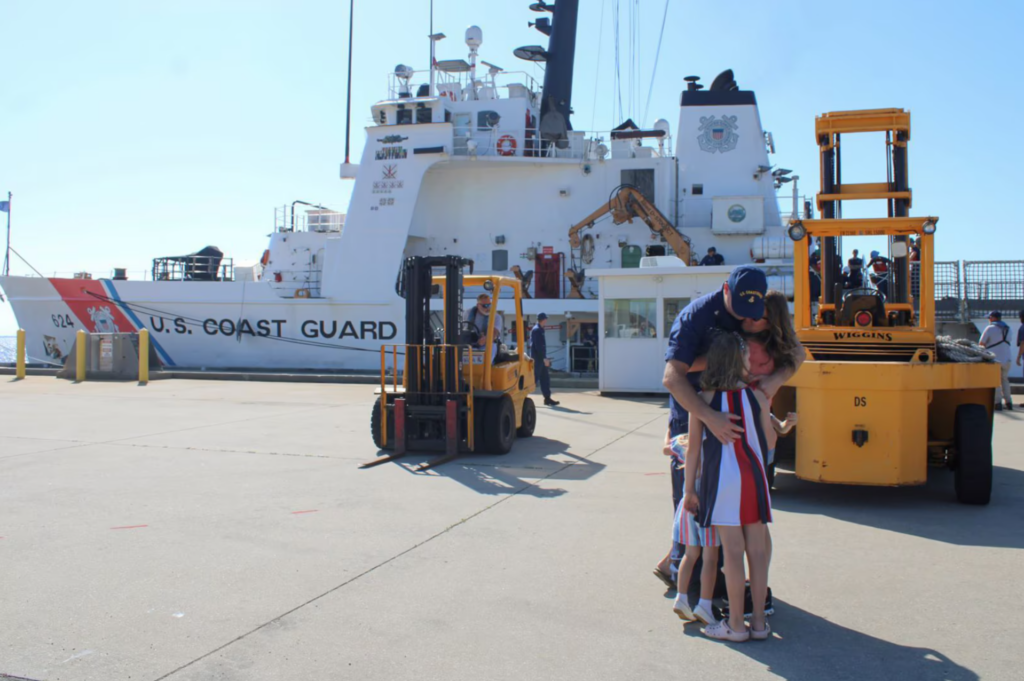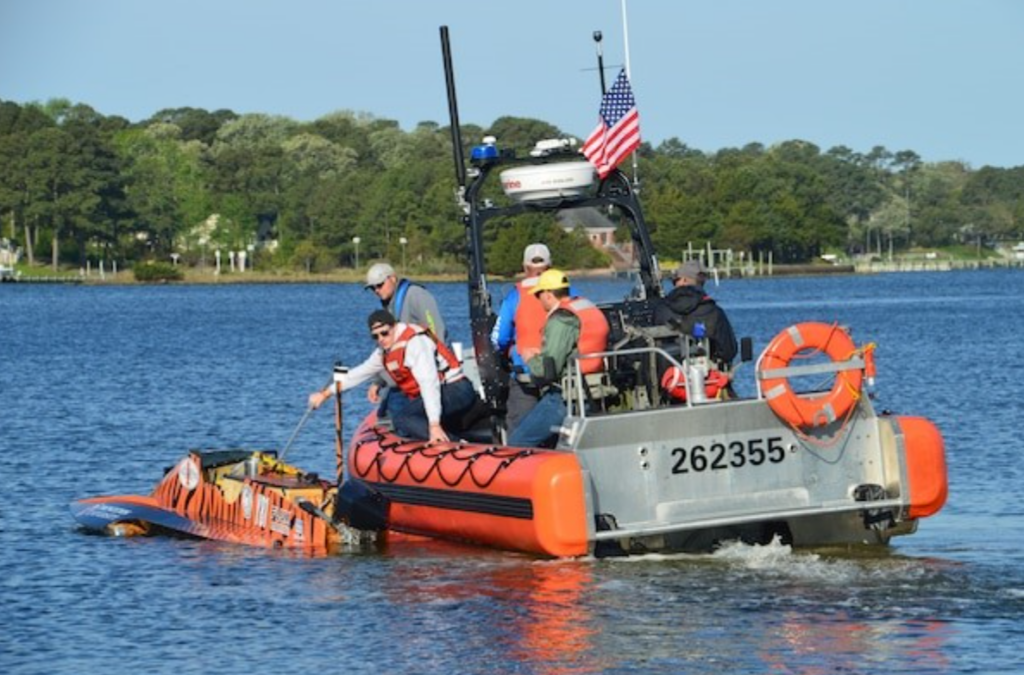Keel Authenticated for Future USNS Hector A. Cafferata Jr.

From Team Ships Public Affairs, 25 April 2024
SAN DIEGO – The keel for the future USNS Hector A. Cafferata Jr. (ESB 8), a Lewis B. Puller-class Expeditionary Sea Base, was laid at GD NASSCO shipyard April 25.
The ship will be named for U.S. Marine Corps Reserve Private Hector A. Cafferata Jr., who served with distinction during the Korean War. Surviving the Battle of Chosin Reservoir among those who would be called, “the Chosin Few,” Cafferata received the Medal of Honor from President Harry S. Truman for his life-saving heroism during that battle.
The contemporary keel laying ceremony represents the joining together of a ship’s modular components at the land level. As part of the ceremony, the keel is authenticated when the sponsors etch their initials into a ceremonial keel plate. The namesake’s daughter, Heather Cafferata, and granddaughter, Jessica Cafferata, attended the keel laying ceremony as the ship sponsors. The ceremony represents the connection between a ship and its sponsors, throughout the ship’s life.
“We are honored that the late Hector A. Cafferata’s Jr.’s legacy will live on through this ship, and the keel laying is a first step of many milestones to come for this ship,” said Tim Roberts, Strategic and Theater Sealift program manager, Program Executive Office Ships. “ESBs provide a critical capability to the fleet and provide increased flexibility to our Sailors and Marines.”
Expeditionary Sea Base ships are highly flexible platforms used across a broad range of military operations, supporting multiple operational phases. Acting as a mobile sea base, they are a part of the critical access infrastructure that supports deploying forces and supplies to provide prepositioned equipment and sustainment with adaptable distribution capability.
These ships support Aviation Mine Countermeasure and Special Operations Force missions. In addition to the flight deck, the ESB features four aviation operating spots and a hangar capable of supporting MH-53E-equivalent helicopters; accommodations, workspaces, and ordnance storage for embarked forces; and enhanced command, control, communications, computers, and intelligence (C4I). These ships support embarked force mission planning and execution and have a reconfigurable mission deck area to store embarked force equipment, including mine sleds and Rigid Hull Inflatable Boats (RHIBs).
GD NASSCO is also currently constructing the future USNS Robert E. Simanek (ESB 7) and John Lewis-class Fleet Replenishment Oilers Robert F. Kennedy (T-AO 208), Lucy Stone (T-AO 209), Sojourner Truth (T-AO 210) and Thurgood Marshall (T-AO 211).
As one of the Defense Department’s largest acquisition organizations, PEO Ships is responsible for executing the development and procurement of all destroyers, amphibious ships and craft, auxiliary ships, special mission ships, sealift ships and support ships.



